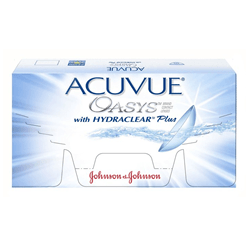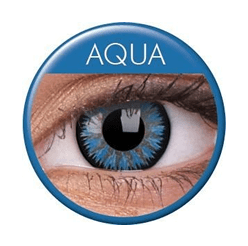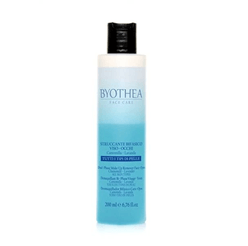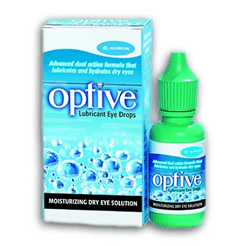Although the use of contact lenses may seem quite complicated at first and it can be time-consuming to get them in your eyes, the skills are already in place after a few attempts. Long-lasting lens wearers can put on and take out lenses even without a mirror, and it all only takes a few seconds. Practice makes perfect! :)
If you have never used lenses before, I would recommend setting an appointment with an ophthalmologist or optometrist first. An ophthalmologist or optometrist will write you a lens prescription and help you get your lenses for the first time.
If you have a lens prescription and purchased contact lenses, you should remember that the lenses are still a foreign body in your eyes, so your eyes need time to get used to the lenses. During the first days, it is not recommended to keep the lenses in the eye for more than 2-4 hours. Then start extending the wearing time by a few hours, up to 8-12 hours a day. Monthly and continuous wear lenses can be worn for longer. The length of daily wear of contact lenses depends on the type of contact lens, individual suitability, correct choice, eye condition, place of wear, nature of work, suitability of care product, and other circumstances. It takes about 2 weeks to get used to contact lenses.
It is also recalled that the service life of contact lenses starts from the moment the sterile package is opened and the lens is first used, and it does not depend on how often the lenses are used. For all lenses, manufacturers have specified how long the lenses can be worn. Wearing the lens for a prescribed period may not initially cause immediate discomfort or irritation, but in the long run, using the lens for a predetermined period of time may cause permanent damage.
Applying contact lenses
Always wash your hands thoroughly before putting on the lenses.
Take the lenses out of the package and place them in the container with the right eye lens in the container marked R and the left lens in the container marked L. Always start and remove the lenses from the right eye, so that the lenses will not be confused.
Try to find a place to insert the lenses where you can operate over a smooth surface. If you place the lens over the sink, close the drain with a stopper. When placing lenses, try to avoid random places (public toilets, bathrooms, etc.). It is advisable to do this by sitting at a table and using a table mirror.
There are two ways to place the contact lens in the eye. Choose the one that seems more convenient:
-
One-handed method
1. Place the lens on top of your index finger. Check that the lens is in the correct direction. Namely, examine whether the edges of the lens still rise up, not fall down. The lens should be like a bowl on the tip of your finger, not like a plate. If the lens goes backwards into the eye, there is no need to worry, because in that case, the lens is a little uncomfortable, but it does not damage your eyes. Remove it from the eye again, rinse with solution and place it in the correct direction.
2. Holding your head straight and looking straight ahead, pull the lower eyelid down with the middle finger of the dominant hand.
3. Lift your gaze higher and lock it. Then gently place the lens on the lower part of the white part of your eye. Make sure the lens is in the correct position. Carefully remove the index finger and gently release the lower eyelid. Close your eyes for a moment - the lens moves in the center of the eye. If the lens does not fit, close your eyes and rotate them. You can also push the lens through the eyelid.
If you have difficulty placing the lens in your eye with one hand, try doing so with both hands. In the beginning, for inexperienced users, the two-handed method is easier.
-
Two-hand method
1. Place the lens on top of your index finger, using the middle finger of the other hand to lift the top eyelid. Try to grasp the edge of the lashes well and hold firmly so that the eyelid does not move.
2. Pull the lower eyelid down with the middle finger of your right hand. Always look at the lens and gently place it on the colored part of the eye. Holding the eyelids in the same position, look down and carefully release the lower eyelid first and then the upper eyelid.
At first, there is a slight discomfort in the eye that goes away quickly. If the discomfort persists, check that the lens is still flat on the colored part of the eye. If the irritation persists, a small foreign body may be trapped between the lens and the cornea, or the lens may be upside down. The lens should be removed from the eye, rinsed, and reinserted.
The basic prerequisite for both placing and removing the lens is that the eye is maximally open, the eyelids are so well fixed that blinking is impossible.
Removal of lenses from the eye:
1. Wash and dry your hands.
2. Look up, pull down the lower eyelid with the middle finger of your left hand, and place the index finger of the dominant hand on the lower edge of the lens.
3. Pull down the lens. Look a little up. Gently take the lens between your thumb and forefinger (do not touch the lens with your fingernail) and remove it from the eye. Do not press your fingers hard to prevent the lens from sticking. If this still happens, immerse the lens in the care product, place it in the palm of your hand, and try to gently open the lens with your index finger. Place the lens in a container or simply discard the daily lenses.













